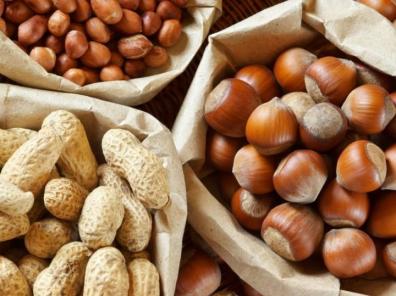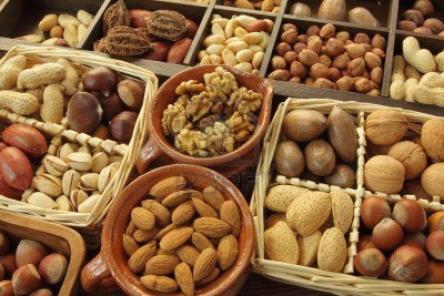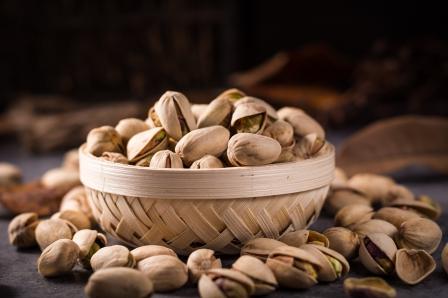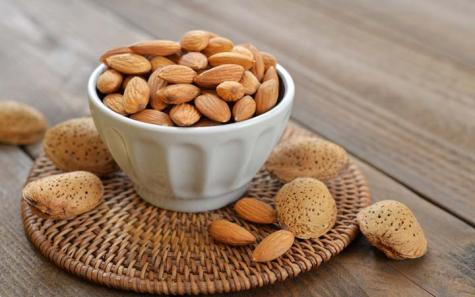When it comes to culinary delights, Europe is a treasure trove of diverse flavors and ingredients. Among the plethora of gastronomic wonders found across the continent, nuts hold a special place, both in traditional cuisines and modern culinary trends. From the sweet aroma of roasted chestnuts in the streets of Rome to the exquisite flavors of Spanish almonds, the nutty delights of Europe are as varied as they are delicious. Join us on a journey through the rich tapestry of nuts in Europe, as we explore the origins, varieties, culinary uses, and health benefits of these small yet mighty ingredients. ### The Nutty Landscape of Europe: A Diverse Array of Varieties Europe boasts a rich diversity of nut varieties, each with its unique flavor profile and culinary applications. Let’s take a closer look at some of the most popular nuts found across the continent: ### Almonds: One of the most versatile nuts, almonds are a staple in Mediterranean cuisine.
.
Whether slivered and sprinkled over salads, ground into a creamy almond butter, or simply roasted and enjoyed as a snack, almonds are a beloved ingredient in both sweet and savory dishes. Spain is a leading producer of almonds in Europe, particularly renowned for its Marcona almonds, prized for their delicate flavor and buttery texture. ### Walnuts: With their rich, earthy flavor and robust crunch, walnuts are a favorite in European cooking. From classic walnut bread in France to walnut-studded pastries in Austria, these nuts add depth and texture to a wide range of dishes. Italy, particularly the regions of Piedmont and Emilia-Romagna, is famous for its high-quality walnuts, often used in traditional desserts like walnut tart or paired with cheese in a savory antipasto platter. ### Hazelnuts: Also known as filberts, hazelnuts are beloved for their sweet, buttery taste and distinctively crunchy texture. Turkey is the largest producer of hazelnuts globally, but European countries like Italy and Spain also cultivate these flavorful nuts.
..
 Hazelnuts feature prominently in Italian desserts like decadent hazelnut chocolate spread, known as gianduja, and are a key ingredient in the classic French pastry, praline. ### Chestnuts: A symbol of winter in many European countries, chestnuts have a uniquely sweet and starchy flavor that sets them apart from other nuts. Roasted chestnuts are a popular street food across Europe, evoking a sense of warmth and nostalgia during the holiday season. In regions like Tuscany, chestnuts are used in traditional dishes like castagnaccio, a dense chestnut flour cake flavored with rosemary and pine nuts. ### Pistachios: While primarily associated with Mediterranean and Middle Eastern cuisines, pistachios also have a strong presence in European gastronomy. These vibrant green nuts add a pop of color and a buttery richness to both sweet and savory dishes. Sicily, in particular, is known for its prized Bronte pistachios, revered for their intense flavor and vibrant hue. Pistachios are commonly used in Italian gelato, Greek baklava, and Turkish delight, showcasing their versatility in desserts. ### Pecans: Although native to North America, pecans have found their way into European kitchens, adding a touch of southern charm to desserts and baked goods.
Hazelnuts feature prominently in Italian desserts like decadent hazelnut chocolate spread, known as gianduja, and are a key ingredient in the classic French pastry, praline. ### Chestnuts: A symbol of winter in many European countries, chestnuts have a uniquely sweet and starchy flavor that sets them apart from other nuts. Roasted chestnuts are a popular street food across Europe, evoking a sense of warmth and nostalgia during the holiday season. In regions like Tuscany, chestnuts are used in traditional dishes like castagnaccio, a dense chestnut flour cake flavored with rosemary and pine nuts. ### Pistachios: While primarily associated with Mediterranean and Middle Eastern cuisines, pistachios also have a strong presence in European gastronomy. These vibrant green nuts add a pop of color and a buttery richness to both sweet and savory dishes. Sicily, in particular, is known for its prized Bronte pistachios, revered for their intense flavor and vibrant hue. Pistachios are commonly used in Italian gelato, Greek baklava, and Turkish delight, showcasing their versatility in desserts. ### Pecans: Although native to North America, pecans have found their way into European kitchens, adding a touch of southern charm to desserts and baked goods.
…
 Pecan pie, a beloved American classic, has gained popularity in Europe, with variations that incorporate local ingredients like honey or bourbon. In countries like Spain and France, pecans are often used in confections like pralines or blended into creamy pecan butter for a decadent spread. ### Culinary Marvels: How Nuts Enhance European Dishes Nuts play a crucial role in European cuisine, adding depth, texture, and a delightful nuttiness to a wide range of dishes. From savory entrées to sweet treats, nuts are a versatile ingredient that can elevate the flavor profile of any meal. Let’s explore how nuts are used in various European culinary traditions: ### Savory Delights: In European savory dishes, nuts are often toasted or roasted to enhance their flavor and crunch. In Italian pesto, pine nuts are a key ingredient, adding a rich, nutty taste to the vibrant basil sauce. Spanish romesco sauce features almonds and hazelnuts, lending a creamy texture and a hint of sweetness to grilled vegetables or seafood. In France, duck breast is often served with a crunchy walnut and herb crust, creating a harmonious balance of textures and flavors. ### Sweet Indulgences: European desserts abound with the richness of nuts, whether folded into pastries, sprinkled over cakes, or ground into luxurious creams. Baklava, a popular dessert in Greece and Turkey, layers flaky phyllo pastry with a sweet filling of pistachios, walnuts, or almonds, drizzled with fragrant honey syrup. In Italy, hazelnuts shine in desserts like torta gianduia, a luscious chocolate hazelnut cake that celebrates the marriage of these two decadent flavors. Spanish marzipan, made from ground almonds and sugar, is a beloved treat during the Christmas season, shaped into intricate figures and flavored with citrus or spices.
Pecan pie, a beloved American classic, has gained popularity in Europe, with variations that incorporate local ingredients like honey or bourbon. In countries like Spain and France, pecans are often used in confections like pralines or blended into creamy pecan butter for a decadent spread. ### Culinary Marvels: How Nuts Enhance European Dishes Nuts play a crucial role in European cuisine, adding depth, texture, and a delightful nuttiness to a wide range of dishes. From savory entrées to sweet treats, nuts are a versatile ingredient that can elevate the flavor profile of any meal. Let’s explore how nuts are used in various European culinary traditions: ### Savory Delights: In European savory dishes, nuts are often toasted or roasted to enhance their flavor and crunch. In Italian pesto, pine nuts are a key ingredient, adding a rich, nutty taste to the vibrant basil sauce. Spanish romesco sauce features almonds and hazelnuts, lending a creamy texture and a hint of sweetness to grilled vegetables or seafood. In France, duck breast is often served with a crunchy walnut and herb crust, creating a harmonious balance of textures and flavors. ### Sweet Indulgences: European desserts abound with the richness of nuts, whether folded into pastries, sprinkled over cakes, or ground into luxurious creams. Baklava, a popular dessert in Greece and Turkey, layers flaky phyllo pastry with a sweet filling of pistachios, walnuts, or almonds, drizzled with fragrant honey syrup. In Italy, hazelnuts shine in desserts like torta gianduia, a luscious chocolate hazelnut cake that celebrates the marriage of these two decadent flavors. Spanish marzipan, made from ground almonds and sugar, is a beloved treat during the Christmas season, shaped into intricate figures and flavored with citrus or spices.




Your comment submitted.